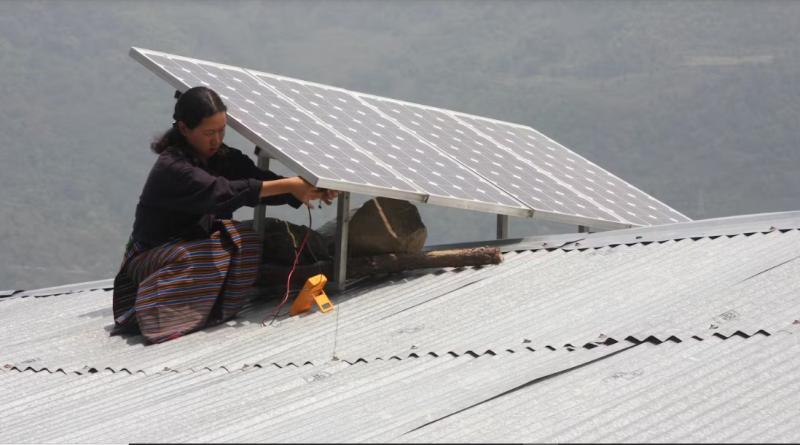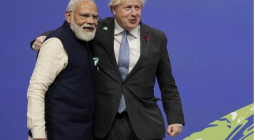New frontiers in low-cost clean tech

Leaders from all quarters must collaborate to remove the barriers to affordable clean energy, such as insufficient and expensive battery energy storage systems. Doing so could ignite demand, stimulate innovation and trigger a market transformation.
The leaders’ declaration that emerged from the recent G20 summit in New Delhi highlighted the urgent need for collective action on climate change and sustainable finance. Central to the group’s Green Development Pact is the recognition that the energy transition must be cost-effective to accelerate progress. To reach this tipping point in affordability, we must remove the barriers – like insufficient and expensive energy storage – currently preventing the growth of renewables.
To be sure, there is a lot of ground to cover. According to the International Energy Agency’s World Energy Outlook 2022, the energy sector needs to triple renewable energy capacity by 2030 to achieve net-zero emissions by 2050.
There is also the question of funding. As part of the declaration, G20 leaders reaffirmed the commitment made by developed countries to mobilise US$100 billion per year in climate finance to support the developing world’s mitigation and adaptation efforts. In a speech before the summit, European Council President Charles Michel claimed that this goal would be met for the first time in 2023. While this represents a significant step forward, it falls far short of the US$4.5 trillion in annual clean-energy investments required by 2030 to limit global warming to 1.5° Celsius above pre-industrial levels.
A massive shift in our approach to climate finance is clearly necessary. Multilateral development banks and philanthropies should play a vital role in facilitating affordable financing and mitigating risk to encourage private-sector investment, as well as establishing low-cost funds to ease the transition from fossil fuels to renewables. The goal is not only to decrease dramatically the price of clean-energy technologies, but also to lower the costs for research and development, facilitate reaching mass-market scale, and develop financial linkages.
But progress on affordability requires a concerted effort from all quarters. By collaborating to drive down the costs of renewables, we can ignite demand, stimulate innovation, and trigger a market transformation that paves the way to a more sustainable and resilient future for us all.
Much depends on solving the problem of energy storage. Solar and wind power will almost certainly account for most renewable-electricity generation, owing to their affordability and widespread availability. But these sources are abundant only some of the time: countries around the equator receive about 12 hours of sunlight each day, while wind is inconsistent. Battery energy storage systems (BESS) are emerging as a potential solution to this inherent variability – especially as they approach a critical cost-efficiency threshold.
The Global Leadership Council, which was established by the Global Energy Alliance for People and Planet (of which I am chairman), has made BESS one of its signature initiatives. At the upcoming United Nations Climate Change Conference (COP28) in Dubai, the council will launch the BESS Consortium, a multi-stakeholder partnership of leading development-finance institutions that will support the deployment of first-wave BESS projects across developing countries in Africa, Asia, Latin America, and the Caribbean. The aim is to mobilise five gigawatts of BESS by the end of 2024, secure more than US$4 billion in grant, concessional, and commercial finance, and, by 2030, unlock 90 gigawatts of BESS to enable 400 gigawatts of renewable energy.
India, in particular, has huge potential for BESS, given its plan to increase renewable-energy capacity to 600 gigawatts (65 per cent of total installed capacity) by 2032. To achieve this ambitious goal, distribution companies must be able to procure and accommodate large volumes of renewables in a sustainable manner. At the distribution end, BESS can provide grid balancing, ramping support, and other critical services to reduce the total cost of power procurement.
In New Delhi, a 40-megawatt-hours BESS project aims to build a scalable pathway for one gigawatt of storage by 2026, creating 10,000 jobs. The pilot project, when scaled up, could advance the technology and encourage more widespread renewable use. This would enhance the stability and dependability of the power grid, allowing for greater integration of clean-energy sources. Eventually, the project could cut carbon dioxide emissions and ensure a cost-effective and reliable supply of renewables.
These technologies have immense potential to promote economic diversification, strengthen energy security, and foster job opportunities. Collaborating to advance them and establish a global landscape where sustainable energy underpins prosperity is the focus of this week’s Energy Transition Dialogues in India.
The race to make renewables affordable offers an unparalleled opportunity to generate sustainable and inclusive growth while reducing carbon dioxide emissions. But we can get there only if the private sector, governments, and civil society act together to lower the price of – and increase access to – clean tech.
Ravi Venkatesan is Chairman of the Global Energy Alliance for People and Planet.






